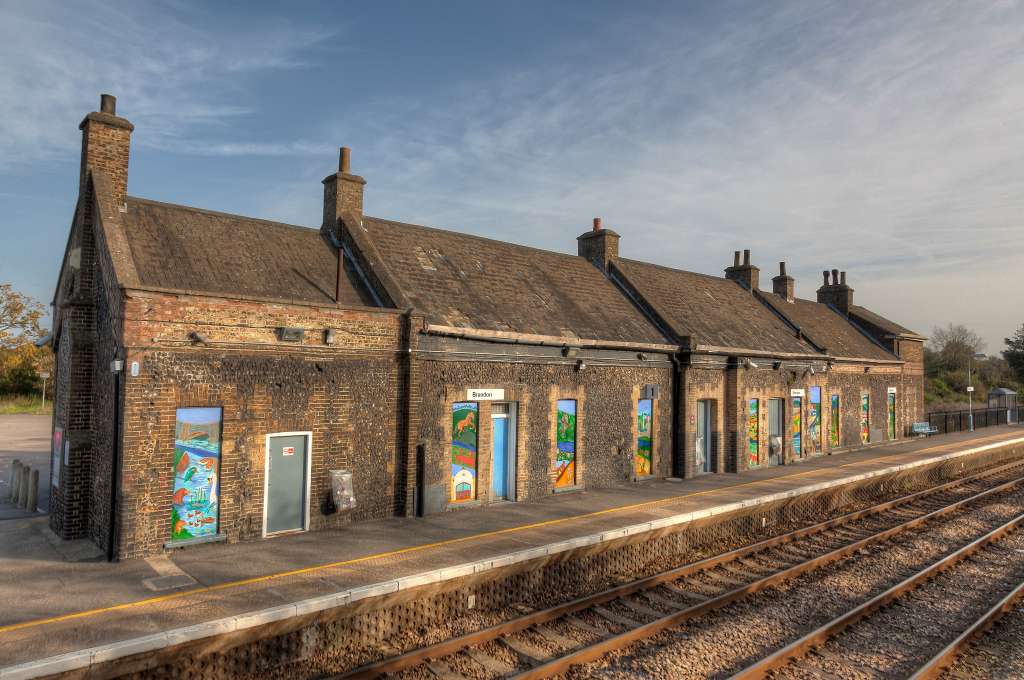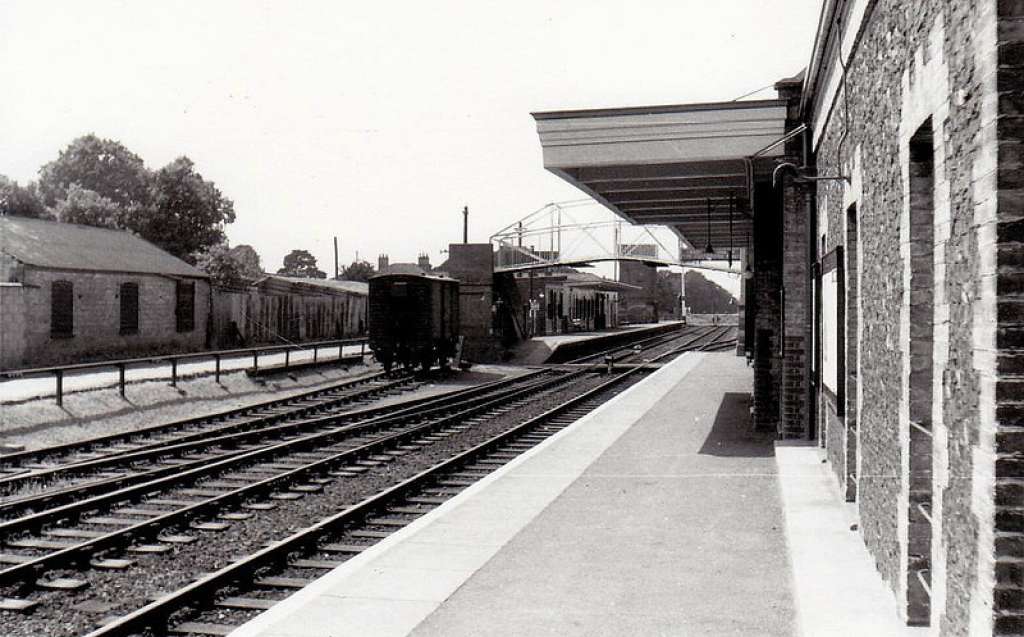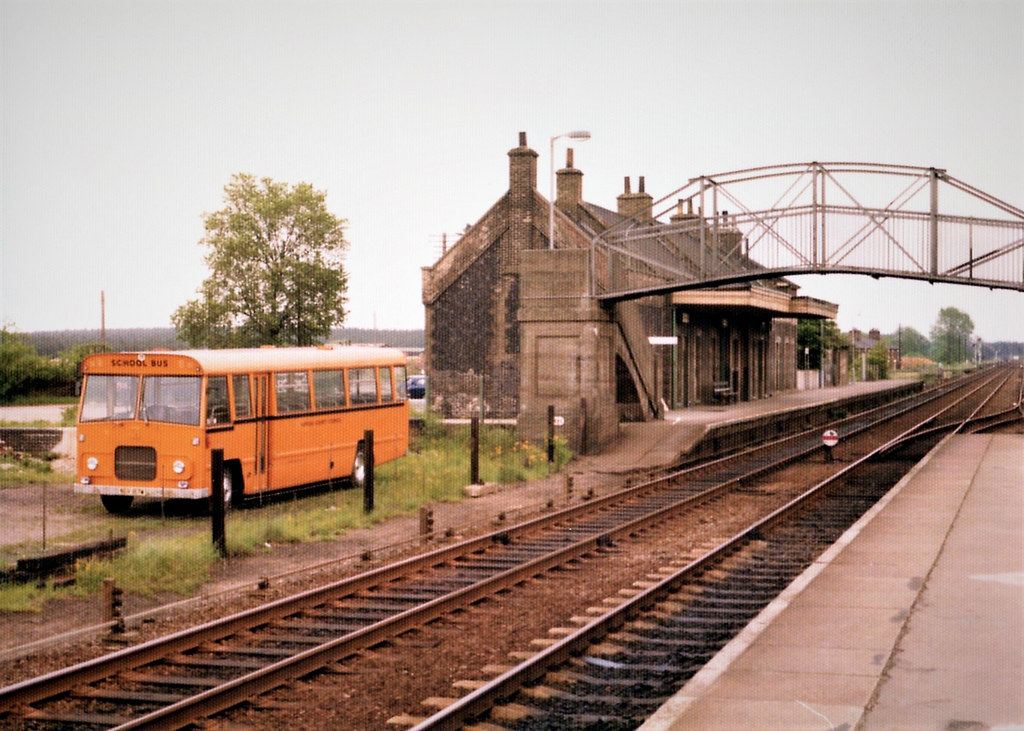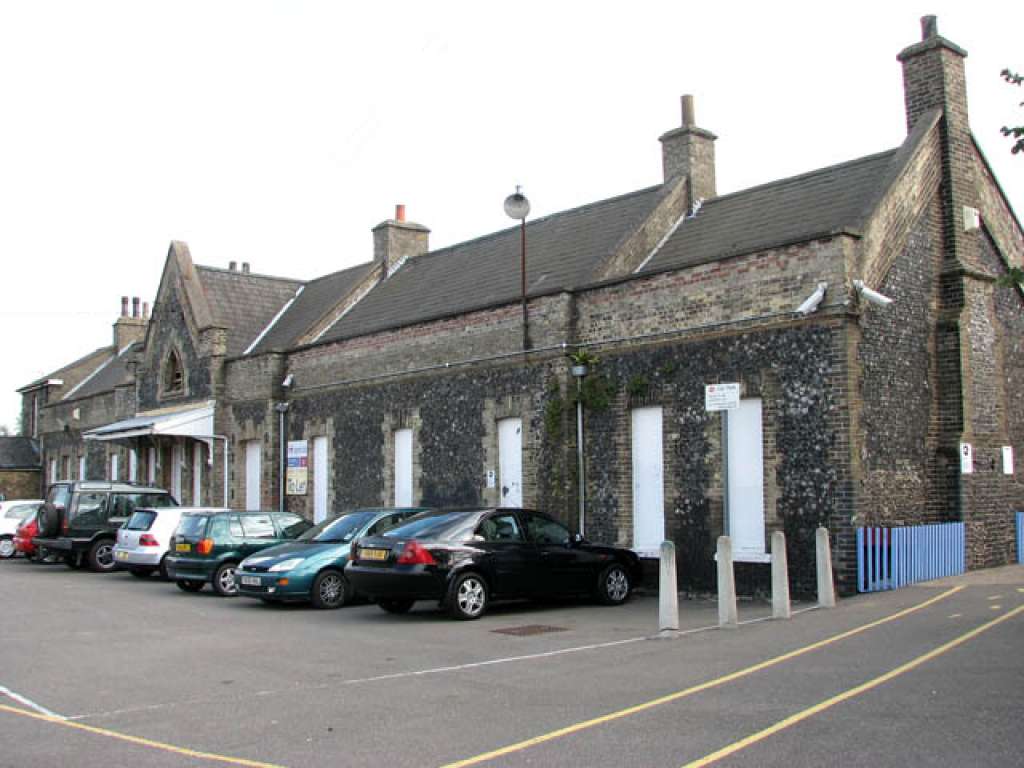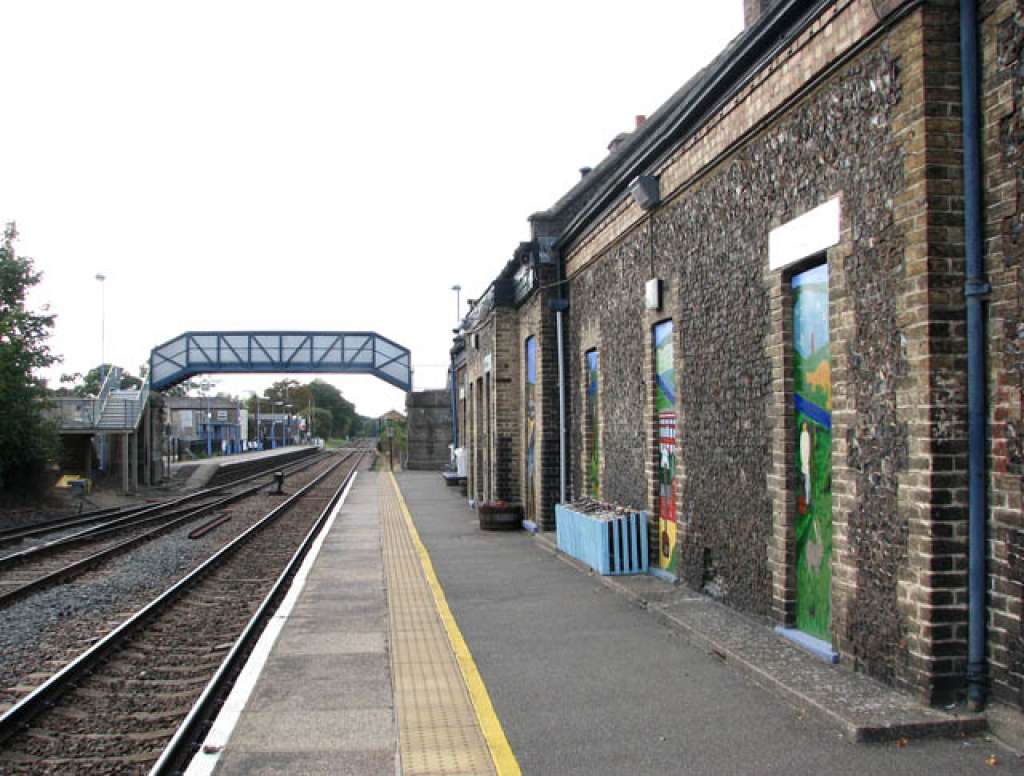PRESS RELEASE: New Owner Wanted - Small Station with Big History
6 March 2020
Calling all railway buffs to save a Suffolk station which served both the RAF and the US Air Force during the second world war.
SAVE Britain’s Heritage is seeking a reprieve for an empty and forlorn country station which is crying out for rescue, restoration and revival. Brandon Station in Suffolk sits near the major RAF and USAF bases at Lakenheath and Mildenhall. Completed in 1845, its charm comes in its domestic scale – like a row of cottages including a station master's house. True, its canopies have long gone but old photographs survive to provide the necessary detail for reconstruction.
However, the historic station building is now set to be demolished under permitted development rights by rail operator Greater Anglia, who have a 99-year lease on the station from owner Network Rail and wish to extend the station car park.
Railway stations were the subject of SAVE’s first exhibition held at the RIBA in 1976. In the companion book Railway Architecture we wrote, “Britain retains a fascinating collection of small stations, the product of numerous independent companies, each of whom provided a brand of station reflecting its financial stature, its pretensions and the architects it employed.
“While major stations were often flamboyant in their architecture, numerous minor stations are of architectural merit too. There were delightful small stations in the Cottage Orne style with bays windows, dormers and fancy barge boards: there were Tudor-style stations with gables soaring chimneys and ball finials.”
Many companies, conscious of the concerns the railway caused, built in local materials to blend with the local scene. Brandon was a renowned centre for Suffolk flint napping, and flints were used both for the station and the adjacent station master's house.
During the Second World War, Brandon was the main station for the American Airforce and large sidings were put in (known as the American Sidings). It also featured in a 1968 episode of hit TV comedy Dad's Army. Although the station is still a stop on the main line from Cambridge and Norwich, the station offices were closed in the 1980s and up until September 2004 were leased to a building company. They are now empty and boarded up.
When a local enthusiast requested spotlisting in 2006, it was asserted that the interior was absolutely complete, but Historic England was unable to gain access to confirm this.
Historic England in its guidance for listing railway structures states: “When it comes to purpose-built railway structures, most pre-1850 buildings will often be of international significance as being among the earliest railway structures in the world, and even partial survivals need to be assessed carefully. The 1840s saw a massive expansion in the network and while the Italianate style was initially favoured, many designs were eclectic and realised in a variety of styles. Great care should be taken in seeking out work of this date because it is often hidden by later alterations and extensions.”
Alas Historic England, unable to inspect the interior, decided not to list the station while acknowledging the station's local historic interest.
Marcus Binney, executive president of SAVE Britain’s Heritage says: “We appeal to Greater Anglia to grant a reprieve to allow a concerted rescue effort which will give the station a long-term use.”
Ben Oakley, Conservation Officer at SAVE Britain’s Heritage says: “Having stood the test of time for 175 years, this excellent historic station building deserves an owner who cares and a brighter future than total demolition, all for the sake of additional chargeable car park spaces.”
SAVE has requested Greater Anglia delay their demolition plans whilst we work with local campaigners to establish a new use and owner for the building. Further updates to follow.
ENDS
Note to editors
- For more information and images contact Ben Oakley, Conservation Officer at SAVE Britain's Heritage: ben.oakley@savebritainsheritage.org / 020 7253 3500.
- SAVE Britain’s Heritage has been campaigning for historic buildings since its formation in 1975 by a group of architectural historians, writers, journalists and planners. It is a strong, independent voice in conservation, free to respond rapidly to emergencies and to speak out loud for the historic built environment.

